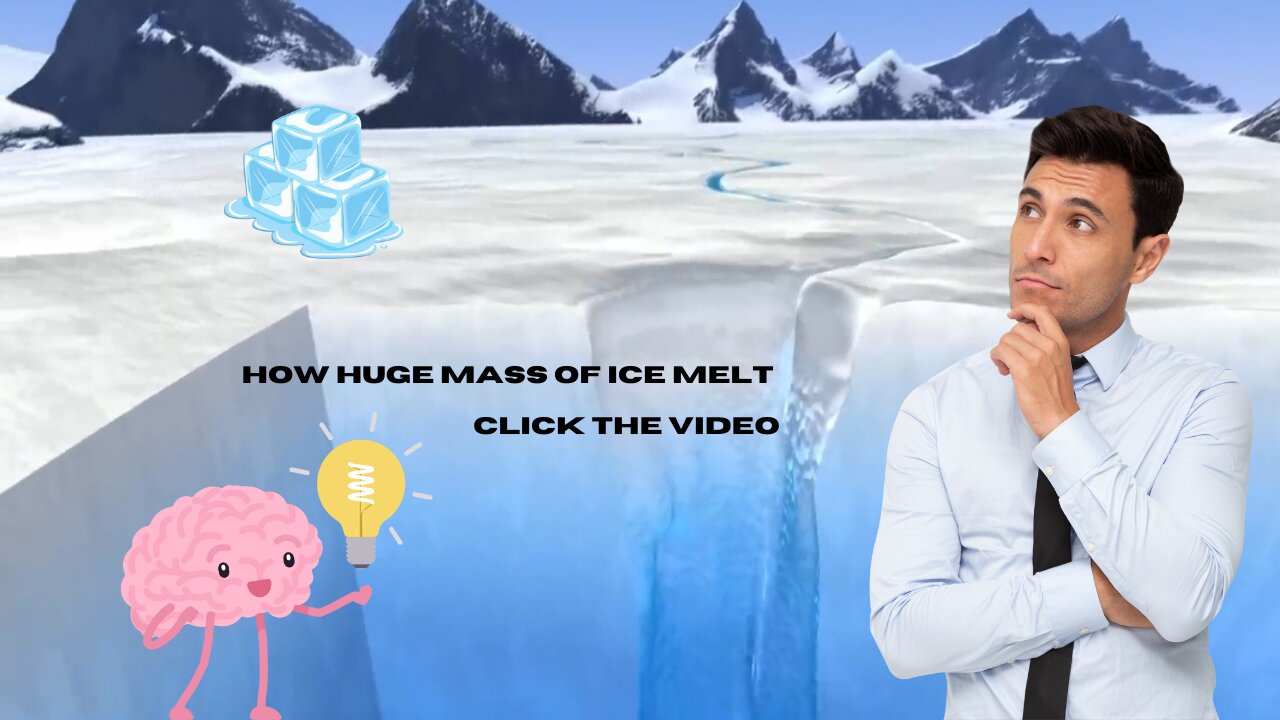Premium Only Content

Melting Giants: Exploring how Disappearing Glaciers
Glacier melting is a natural process by limited factors. As temperatures rise and climate patterns shift, glaciers begin to lose their ice mass, resulting in a gradual retreat or even a rapid collapse. The process can be described as the transformation of solid ice into liquid water.
When temperatures increase, the first noticeable change is the formation of meltwater on the surface of the glacier. As sunlight heats the ice, it begins to melt, creating streams and small pools. These temporary water bodies start to flow down through crevices, fissures, and moulins within the glacier, creating intricate networks beneath the surface.
As the meltwater seeps deeper into the glacier, it encounters internal friction and pressure, which gradually elevates the temperature. This combination of heat and pressure causes the ice to deform, creating channels and tunnels within the glacier where the water can flow freely.
The flowing water eventually reaches the base of the glacier, creating a lubricating effect that facilitates the glacier's movement. This basal water helps to reduce friction between the ice and the underlying bedrock, allowing the glacier to slide downhill at a faster rate. As a result, the glacier faces accelerated erosion, leading to a further thinning and loss of ice.
-
 1:06:40
1:06:40
Donald Trump Jr.
13 hours agoThe Left is Taking one L After Another, Live with Michael Knowles | Triggered Ep. 217
175K113 -
 47:17
47:17
Kimberly Guilfoyle
13 hours agoWoke Gets DOGE’d, Live with AJ Rice & Jarrett Stepman | Ep. 197
129K43 -
 20:11
20:11
Candace Show Podcast
12 hours agoBecoming Brigitte: Candace Owens x Xavier Poussard | Ep 6
193K330 -
 8:25:38
8:25:38
Dr Disrespect
17 hours ago🔴LIVE - DR DISRESPECT - ELDEN RING DLC - REVENGE
194K22 -
 54:22
54:22
LFA TV
1 day agoThe End of the Trans-Atlantic Alliance | TRUMPET DAILY 2.17.25 7PM
50.2K7 -
 55:56
55:56
BIG NEM
15 hours agoUGLY COCO: The Rapper Who’s Tried EVERY PSYCHEDELIC 🌌
22.6K1 -
 1:42:51
1:42:51
2 MIKES LIVE
13 hours ago2 MIKES LIVE #181 Deep Dive Monday!
26.8K3 -
 1:57:43
1:57:43
Quite Frankly
13 hours ago"Low Tide at The Pier: Munich Tears" 2/17/25
38.5K19 -
 27:44
27:44
The Based Mother
14 hours ago $0.80 earnedBOOK BAN LIES. Karen England and the MSM fairy tale that books are being “banned” by fascists
18.8K3 -
 1:01:52
1:01:52
In The Litter Box w/ Jewels & Catturd
1 day agoBest Presidents' Day Ever! | In the Litter Box w/ Jewels & Catturd – Ep. 743 – 2/17/2025
113K68